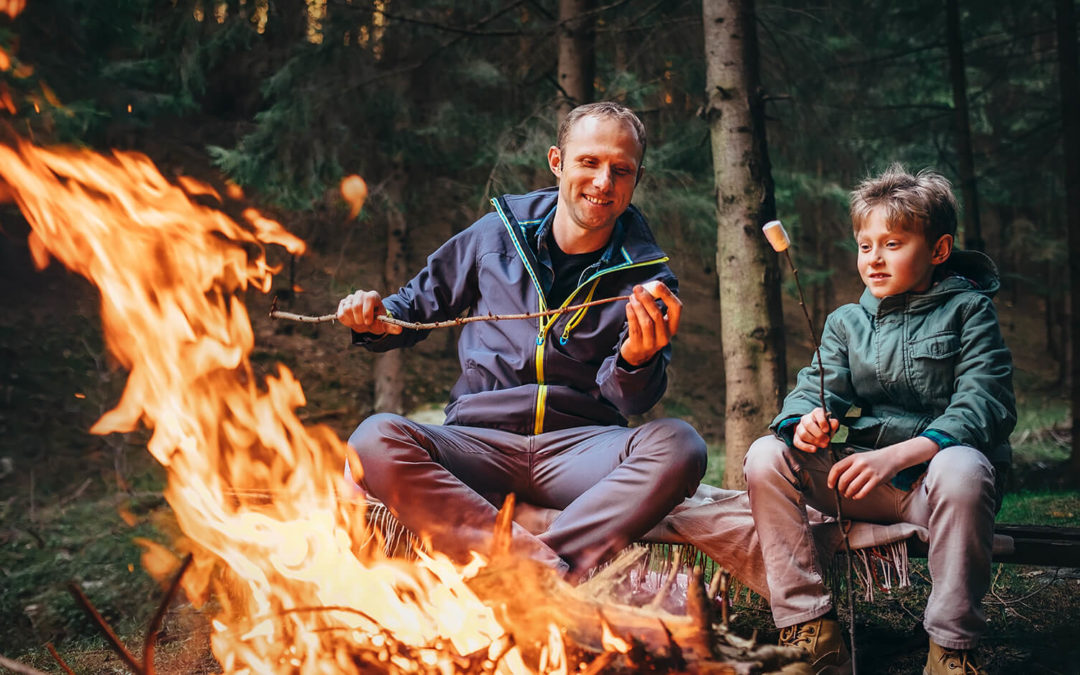According to www.firesafety.gov, someone died in a fire in the U.S. every 162 minutes, and someone was injured every 32 minutes, in 2006. Children 4 and under are at increased risk of fire related injury and death. When a fire starts, occupants often only have minutes to get out safely. There are things that can be done to protect children and their families from fire and burns, and I would like to talk about these as part of my continuing series on safety.
According to www.firesafety.gov, two out of three deaths from fires occur in homes with no smoke alarms or no working smoke alarms. Installing a working smoke alarm is one of the best and least expensive ways to protect your family. Some guidelines for smoke alarm placement are as follows:
- Install working smoke alarms on every level of the home, outside sleeping areas, and inside bedrooms.
- Replace smoke alarm batteries at least annually (doing with the time change is a good idea.)
- Test alarms once a month
- Do not place alarms to close to kitchen appliances, as this may result in nuisance alarms.
- Avoid locating alarms near bathrooms, heating appliances, windows, or ceiling fans.
- Replace alarms every 10 years.
Having working fire alarms is the first best step to protecting your family, but being aware of a fire is only the first step. Getting out safely in a fire can be difficult with smoke and flames decreasing visibility and blocking some exits. It is important to come up with a fire escape plan. Here are some tips to come up with a fire escape plan:
- Practice escaping from every room in the home.
- It is best to have two ways to get out of each room.
- Practice escape plans both during the day and night.
- Designate a meeting place, so you know where to go and who is out of the house and who is not.
- Designate someone to go to a neighbor and call 911.
- Once you are out, stay out.
- Practice your plan twice a year.
Some things to prevent fires in your home include:
- Keep matches, lighters, and flammable liquids locked up where children can’t get them.
- Never leave cooking food unsupervised.
- Turn handles on pots inward.
- Roll up sleeves when working around the stove, and try not to reach over the stove.
- Have heating and cooling systems and water heaters inspected annually.
- Have fireplaces check and cleaned yearly
- Do not leave portable heaters unattended, and make sure to follow the manufacturer’s instructions.
- Do not use electric cords that are stiff or cracked.
- Avoid extension cords.
- Keep furniture and other combustible material away from light bulbs, particularly halogen lights.
- Always extinguish candles when you won’t be in the room, and keep them from combustible objects.
- Never smoke in bed, and put out tobacco products when tired.
Burns are a common household injury as well. Some simple strategies to prevent burns include:
- Avoiding using table cloths. Children can pull on the cloth causing containers with hot liquid to pour on top of them. Do not place containers on newspapers and other things that children can pull down.
- Keep electric cords up. Children are naturally curious and will pull on the crock-pot, coffee maker or curling iron cords. It only takes a second of hot liquid or a hot curling iron touching the skin to cause a burn.
- Always test food warmed in a microwave before giving it to a child, and never heat milk or formula in a microwave. Microwaves do not heat evenly, and children can be burned even if the milk feels cool initially.
- Keep your child away when working with hot foods or taking items out of the oven or microwave.
- Check the temperature of water before putting a child in the tub. It is recommended to turn water heaters down to 120 degrees F or less to prevent burns.
Protecting your family from fires and burns is very important. There is a huge amount of information available. I encourage you to go to www.firesafety.gov for more information.

